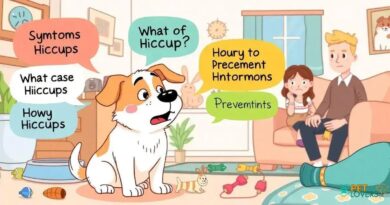What is No-kill shelters
What is No-kill Shelters?
No-kill shelters are animal rescue organizations that prioritize the welfare of pets, particularly dogs and cats, by ensuring that they are not euthanized unless they are terminally ill or pose a danger to public safety. This approach contrasts sharply with traditional shelters, where euthanasia may be used as a means to manage overcrowding. The philosophy behind no-kill shelters is rooted in compassion and the belief that every animal deserves a chance at life, regardless of their circumstances.
The Philosophy Behind No-kill Shelters
The no-kill movement is driven by the idea that all animals have the right to live and that humane alternatives to euthanasia should be pursued. This philosophy encourages shelters to adopt proactive measures to find homes for animals, including fostering, adoption events, and community outreach programs. By focusing on education and awareness, no-kill shelters aim to reduce the number of animals entering the system in the first place.
How No-kill Shelters Operate
No-kill shelters operate under a set of guidelines that define their commitment to saving lives. They typically maintain a live release rate of 90% or higher, meaning that the majority of animals that enter the shelter are either adopted, transferred to other rescue organizations, or returned to their owners. To achieve this, no-kill shelters often rely on a network of volunteers, foster homes, and partnerships with local businesses and community organizations.
Challenges Faced by No-kill Shelters
Despite their noble intentions, no-kill shelters face several challenges. One of the most significant issues is overcrowding, which can lead to inadequate resources and care for the animals. Additionally, some no-kill shelters may struggle with funding, as they often rely on donations and grants to operate. This financial strain can impact their ability to provide necessary medical care, food, and shelter for the animals in their care.
Community Involvement in No-kill Shelters
Community involvement is crucial for the success of no-kill shelters. These organizations often engage local residents through volunteer opportunities, fundraising events, and educational programs about responsible pet ownership. By fostering a sense of community, no-kill shelters can build a support network that helps to promote their mission and increase adoption rates.
The Role of Foster Homes
Foster homes play an essential role in the operations of no-kill shelters. These temporary placements allow animals to live in a home environment, which can help reduce stress and improve their chances of being adopted. Foster families provide socialization, training, and care for the animals, making them more appealing to potential adopters. This system not only benefits the animals but also helps to alleviate overcrowding in the shelter.
Success Stories from No-kill Shelters
No-kill shelters have numerous success stories that highlight the positive impact of their work. Many animals that were once abandoned or neglected have found loving homes through these organizations. These success stories often serve as powerful testimonials that inspire others to adopt or support no-kill initiatives. They demonstrate the potential for transformation and the importance of giving animals a second chance.
How to Support No-kill Shelters
Supporting no-kill shelters can take many forms, from adopting a pet to volunteering time or donating funds. Individuals can also help by spreading awareness about the importance of no-kill initiatives and encouraging others to consider adoption over purchasing pets. By supporting these shelters, community members contribute to a larger movement that seeks to end the unnecessary euthanasia of healthy animals.
The Future of No-kill Shelters
The future of no-kill shelters looks promising as more people become aware of the plight of homeless animals and the importance of humane treatment. As communities rally around the no-kill movement, it is likely that more shelters will adopt similar practices, leading to a significant reduction in euthanasia rates. Continued advocacy and education will be key in ensuring that all animals receive the care and compassion they deserve.



